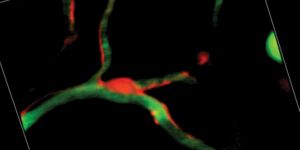Magnetoreception enables animals to sense magnetic fields, which helps them navigate and orient themselves through the perception of location, direction or altitude. It’s been established that a bacterium and a variety of insects and animals use it, including bees, birds and fish. The video below, from Science, explains more about it.
Electric currents are a source of magnetic fields; those currents can be large or small. Earth generates its own magnetic field, created by the outer liquid core. For comparison, the magnetic field generated by an MRI machine is over 100,000 times stronger. However, migratory animals can still use it to navigate.
The vast majority of current evidence of magnetoreception is based on behavior. Testing has shown that altering magnetic fields can change the habits of animals.
Research has demonstrated that neurons in the inner ear of pigeons will fire in response to different characteristics of magnetic fields like polarity and intensity.
An experiment involving bacteria has established the existence of magnetoreception definitively, however. It was 1975 when Richard Blakemore, working at the Woods Hole Oceanographic Institution in Massachusetts, had the idea that magnetite was acting as a magnetic sensor in some bacteria. He collected bacteria from marshes and demonstrated that they would move toward a small magnet he shifted around. Further experiments showed that the bacteria could even find the most efficient way to move based on magnetoreception.
There are two different proposed mechanisms for magnetoreception. One is chemical – some animals carry a protein called a cryptochrome, which undergoes a chemical reaction after exposure to a magnetic field. It’s not known, however, how they might influence neural pathways. The other idea is that special cells in the inner ear or nose have tiny compass needles made of a magnetic material called magnetite, which would exert an effect on neural cascades.
That type of magnetoreceptor is also present in human cells. A geophysicist at the California Institute of Technology (Caltech), Joe Kirschvink, is studying the sense in people. His research team uses a Faraday cage, a device that keeps out electromagnetic interference that comes from stuff like electronics and radio waves, in order to gain more reliable measurements that would enable them to start drawing conclusions from results that could be replicated. Other scientists have used that tool in their own research as well, and that is advancing this burgeoning field of study.
Inside of the Faraday cage, a lining of devices called Merritt coils produce a uniform, rotating magnetic field, similar in intensity to Earth’s. The researchers check the brain waves of a test subject inside the Faraday cage to check for responses. In tests that were reported at this years meeting of the Royal Institute of Navigation (RIN) in the United Kingdom, the investigators revealed that they had seen an effect – there was a sharp decrease in alpha waves after the application of a counterclockwise magnetic field, comparable to the test subject looking to the right.
Because it has been observed in bacteria, some researchers suspect that this is an ancient instinct. Now that some reliable testing methods have been established, it will be interesting to see the results.
Sources:
Science









